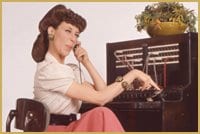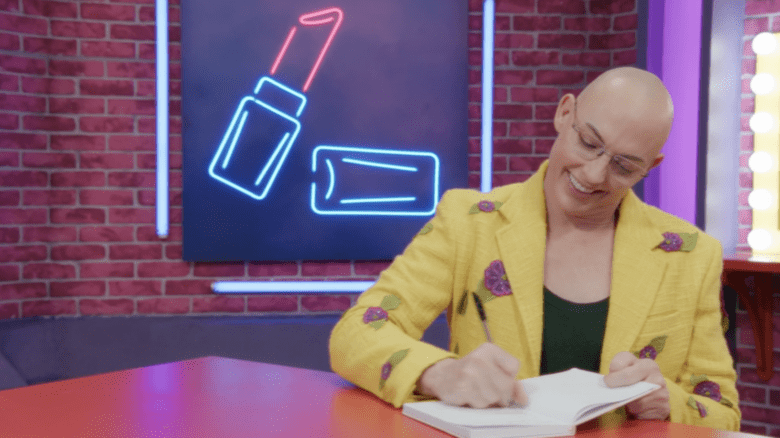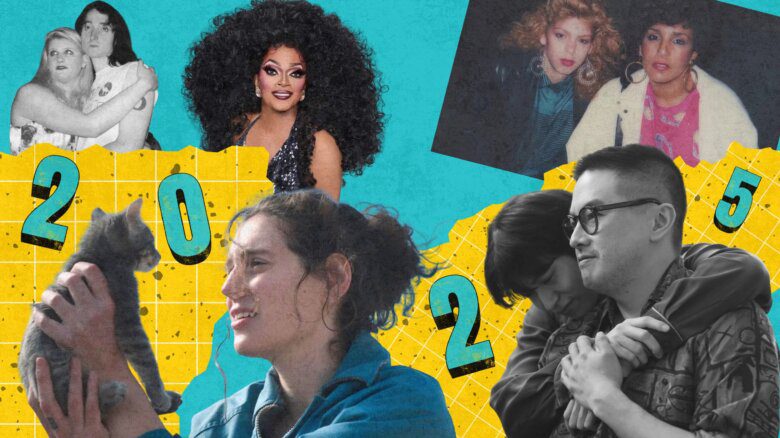She has been entertaining audiences for more than 40 years. Her unique, thought-provoking comedy has been featured on television, recordings, film and stage. She has created original and enduring characters like the outspoken child, Edith Ann, and the nosy telephone operator, Ernestine.
Now Lily Tomlin is bringing these characters and more to her upcoming appearance at Vancouver’s Orpheum Theatre as part of this year’s Unique Lives and Experiences series.
Tomlin first gained fame on television’s Laugh-In in the 1960s. She segued into films in the 1970s with her Academy Award-nominated performance in Nashville, and then conquered Broadway in the 1980s with her Tony Award-winning performance in The Search for Signs of Intelligent Life in the Universe written by her partner, Jane Wagner.
She has appeared in more than 20 films, including 9 to 5, All of Me, Short Cuts, The Celluloid Closet, I Heart Huckabees, and A Prairie Home Companion. She has also appeared on numerous TV shows including her own Emmy Award-winning specials, plus Murphy Brown, Will & Grace, and The West Wing most recently.
Gay audiences are often more fun, more demonstrative, she tells me. “A gay audience is usually hipper. That’s just the deal. I used to have a line saying, ‘There’s no excuse for a square gay person.'”
Tomlin and Wagner recently celebrated their 36th anniversary together. “Just hard work and commitment,” she says, when asked for the secret to their longevity. “And a genuine admiration for somebody. Sometimes I think of her, of the brain that’s inside her head, and I can’t imagine [it] just going nowhere, with death I mean. It doesn’t seem possible because her brain is so good, so rich, and makes her so much who she is.”
She still remembers the first time she heard of Wagner. “I was living in California, and was going to do my Edith Ann album,” she begins. “Jane had done a thing in 1969 called JT, the first thing she’d ever written in terms of a teleplay. It was for after school programming and won a Peabody [Award]. I happened to see it, and I knew that my friend knew her. I loved it so much. It was about a kid in Harlem who befriends an injured and stray cat, but everything about it was poetic. The dialogue was essenced. It was funny, and satiric, and tender, and edgy, everything at once.
“I wanted Edith to be more than she’d been on Laugh-In, so I got Jane’s address,” Tomlin continues. “I wrote her and asked her if she’d help write for the album. I didn’t hear from her in weeks, so I just went on. About five days before I had to record, she sent me a bunch of stuff and it was so much better than anything I was doing, or planning. I got her to come to California and help me produce it. I fell madly for her right away.”
They’ve been together ever since.
Though Tomlin eventually came out in the media in 2000, she has been criticized by many gays and lesbians over the years for not publicly coming out sooner. However, she does not believe that performers have an obligation to come out.
“I don’t think we know where they’re coming from, or what their situation is,” she explains. “It’s good if they can and they do, but you don’t know. You’re not in that person’s shoes.”
Talking about her own coming out she reflects that, “after the women’s movement of the ’70s, I identified as a female much more deeply and personally than as a lesbian because that’s where the foundation was about how women were treated in the culture.
“In ’75, Time offered me the cover if I would come out,” she recalls. “I was more taken aback that they thought I would just do anything to get a cover, and I didn’t do it.
“I was recording an album at the time,” she continues. “[It] was about being interviewed by a magazine. The album is called Modern Scream, and I play everybody.”
“At the time, Cliff Gorman was in [The] Boys in the Band, and he was straight. Every interview he did he tried to make sure everybody knew he was straight. I put a bit in, and I basically took Cliff’s interviews and flipped them.
“The interviewer asked me, ‘What was it like seeing yourself on the big screen playing a heterosexual woman [in Nashville]?’ I did stuff like, ‘I’ve known these women all my life. I know how they walk, I know how they talk,’ and stuff like that. I thought that would be my answer to Time.
“I got on the cover two years later for my work,” she notes. “That’s what I would want to be acknowledged for in that kind of public way.”
In her initial years with Wagner, Tomlin maintains that, “the press never wrote about me, even when I was on the cover of Time. I almost got the cover of Newsweek at the same time. That used to be a coup if a publicist could juggle the two magazines, and keep one from knowing the other one was putting you on the cover. You might get both.”
Though she didn’t get the cover of Newsweek, she still got what she considers to be a huge story in that publication as well. Interestingly, the two magazines dealt with the then-closeted star’s personal life very differently.
“One said I shared a house with Jane, and one said I lived alone. They both knew that Jane and I were a couple. It’s the way things were in those days; that was 1977,” she explains.
“We never wanted to be poster people for anything,” she responds when asked about being a model for successful, long-term lesbian couples, “because the poster usually gets ripped off the side of the building, or something gets plastered over it. We just wanted to be who we were and go on. I am glad that people may be heartened by our relationship, but I am just a human and so is she. I don’t want to set myself up as some symbol, or ideal.”
“And believe me,” she adds, “Jane is somebody that does not want the spotlight at all. She loves to be acknowledged, but she doesn’t want to show up for the interview, or go to an event or anything like that.
“She’s a Southern girl, and Southern girls are very decorous,” Tomlin explains. “She doesn’t like a scene. If somebody’s coming over to pick up an envelope or something, she wants to make devilled eggs for them and sugar cookies, and lemonade.
“She’s really a writer, and very personal. She’s rather cloistered because that’s the only way she can keep her mind focused. But me, I’m the cheap one of the two of us. I’m ready to pick up the phone at any moment. I’m kidding, but not.”
Wagner did an interview once with a gay magazine, Tomlin recalls. “She thought they were really respectful, and liked her work. Then when she saw the paper, she was on the front page. There was a big article [with] another article right next to her. Her head was almost piercing the other article, and it was very salacious, vulgar. I don’t think she’d ever do another interview.”
Despite the couple’s successes together, Tomlin does acknowledge the challenges of living and working with her partner. “It makes it great, and it makes it hard. One of the saving graces we have is that she never comes to the theatre very much. When she does and starts giving me notes, she’s always right because she’s really brilliant.
“When you have great success,” she concludes, “it’s a wonderful thing. A wonderful thing to share, and to see the reward. When we have a failure, or things are hard, it’s hard, but then you have each other anyway.”

 Why you can trust Xtra
Why you can trust Xtra


